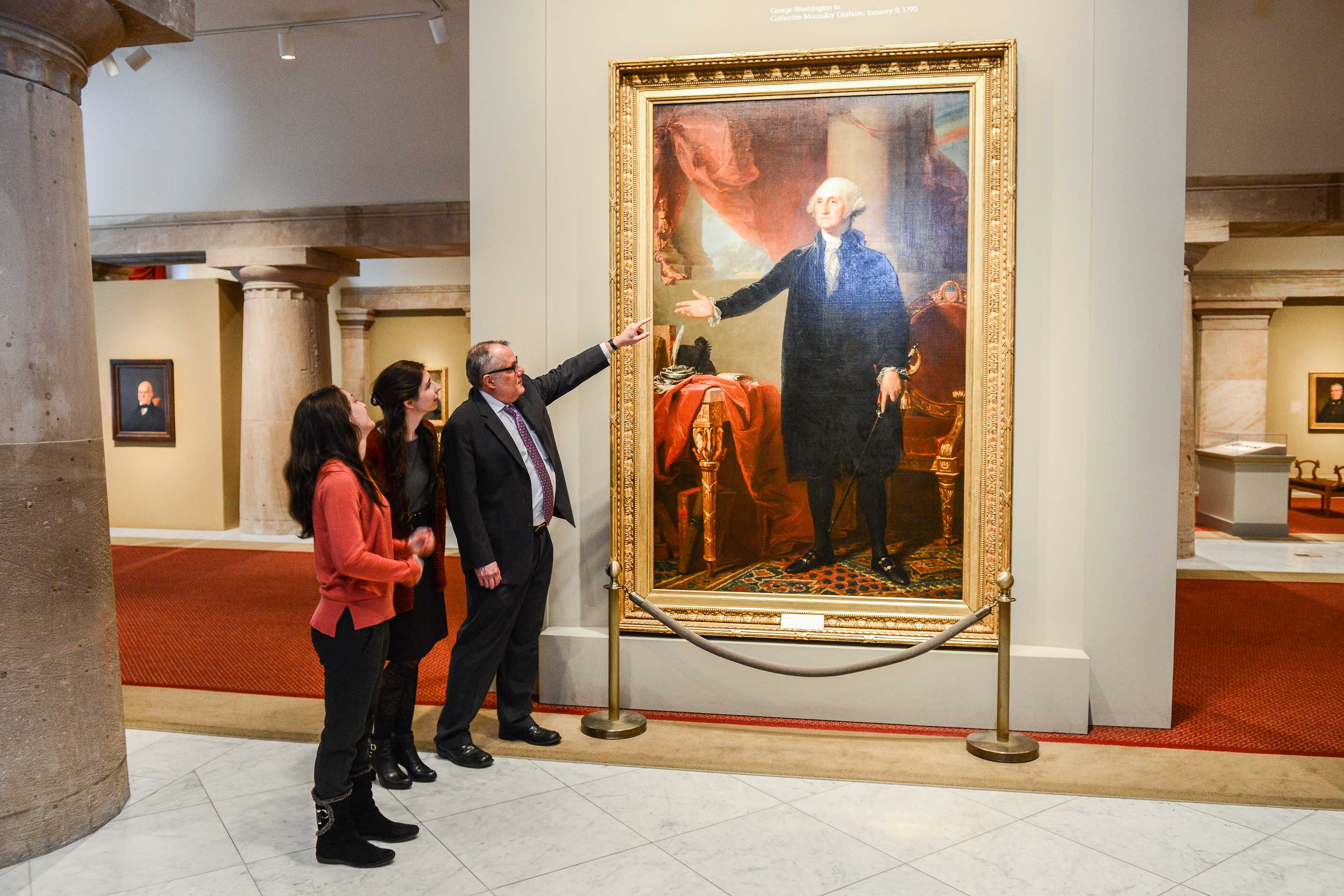Thank You, David Ward!

After 37 years of groundbreaking work, our senior historian David C. Ward is retiring. During his time at the Portrait Gallery, Ward worked as an award-winning curator for shows such as “Hide Seek: Difference and Desire in American Portraiture,” “One Life: Walt Whitman: a kosmos,” and “Dark Fields of the Republic: Alexander Gardner Photographs, 1859-1872.” His publications include Charles Wilson Peale, Art and Selfhood in the Early Republic and Hide/Seek: Difference and Desire in American Portraiture; he also co-edited Lines in Long Array, A Civil War Commemoration: Poems and Photographs, Past and Present. Ward oversaw permanent collection galleries, including spaces devoted to the antebellum age and the gallery covering the years 1945 to 1980 in the ongoing exhibition “Twentieth Century Americans.” Outside of work, he is a prolific poet and avid cyclist. We spoke to David about his career at the museum and plans for after his departure.
You’ve worked at the Portrait Gallery for 37 years. How has it evolved during your time?
I’m shocked at how fast the time has gone. When I arrived in 1980, the Portrait Gallery had a different feel—a survey told us that our audience was Civil War-loving, tweed-wearing, pipe-smoking, and older. We hadn’t really begun reaching out to women or minorities. We were still pretty young, about 20 years old. Since then, the Portrait Gallery went from a museum dedicated to a niche pastime to a museum that addresses questions about American biography and answers contemporary questions of identity. We have really pushed the boundaries of portraiture. We are looking at modern portrait practice in a way that is no longer antiquarian.
The Smithsonian has also changed so much—so many new institutions have opened. Technology has changed the museum. Essentially, with the Portrait Gallery and the Smithsonian, I have seen the evolution of the museum into the modern world. I hope that I have played a small part in helping with these changes.
What has your career taught you?
I came out of graduate school with the idea becoming a professor. But looking back at my career, I actually really enjoyed not teaching. Being engaged as a public historian and intellectual was a better fit for me.
I believe that museums are extremely important to American culture. I like working with people of all ages, of all backgrounds. I like the sense that history is always evolving, and I’ve been able to help it evolve. My work here has humbled me—I’m open to new ideas and arguments. I’m more tolerant of other ideas. I think it’s because of the fact that I have to engage with multiple publics.
One of the things I’ve been happy about in my career is that I never was stuck on one topic. I would have made the best of a teaching job, but I have been able to range across eras that are interesting to both me and the American public. We’re opening “Face of Battle,” a contemporary history show through portraiture. Other exhibitions have been a bit more distant—the history of American poetry or my small exhibitions on Abraham Lincoln and Walt Whitman.
Tell us about some of the special exhibitions that you’ve worked on.
For me, there is nothing like going into an exhibition for the first time. The first time you walk into it, it’s like a curtain going up before a concert or a play. You look at what you thought about, and it really exists. It’s just thrilling.
I’ve done exhibitions on series of topics, from small biographical shows to larger exhibitions, notably “Hide/Seek” and “Dark Fields of the Republic.” They cover a range of topics from contemporary portraiture to modernist poetry. There was always an interest in marginality and the outside. With “Hide/Seek,” especially, there’s an element of being part of a society, but almost outside of it. Same with the modernist poets.
The exhibitions that I liked the most were my two One Life shows—Abraham Lincoln and Walt Whitman. They explored the element of the men creating the modernist personality, the transitional moment that also pops up in Alexander Gardner and “Dark Fields.” They dealt with a series of problems in American historiography.
What is your favorite portrait?
My favorite portrait is the Cracked Plate photograph of Abraham Lincoln by Alexander Gardner. It’s where Lincoln becomes myth, even before he dies. But I’m tired of talking about it.
Only kidding, it’s a great photograph and portrait.
What is your advice for other historians or museum professionals?
The Smithsonian is the greatest museum in the world. But you still have to care about what you do, you can’t just coast. My outlook has always been very task oriented, whether it is writing a label or doing an exhibition. You have to get work done to keep up with the fast-paced nature of museums. Budget your time and energy.
But if you’re looking for work, my best advice is to come to the Smithsonian. You have the liberty to go where your mind takes you. There is a lot of support here. The curators and historians are sometimes unfairly singled out as the “face” of the exhibition, but it really is an entire institutional effort to get things done.
What are your next steps?
This will be the first summer I haven’t worked since 1973. I have some plans, but they aren’t going to happen suddenly or drastically. I’m going to write a third book of poetry. I’ve been very happy with my career, but I’ve been doing it for a long time. I think I’d like to do something else for a while.